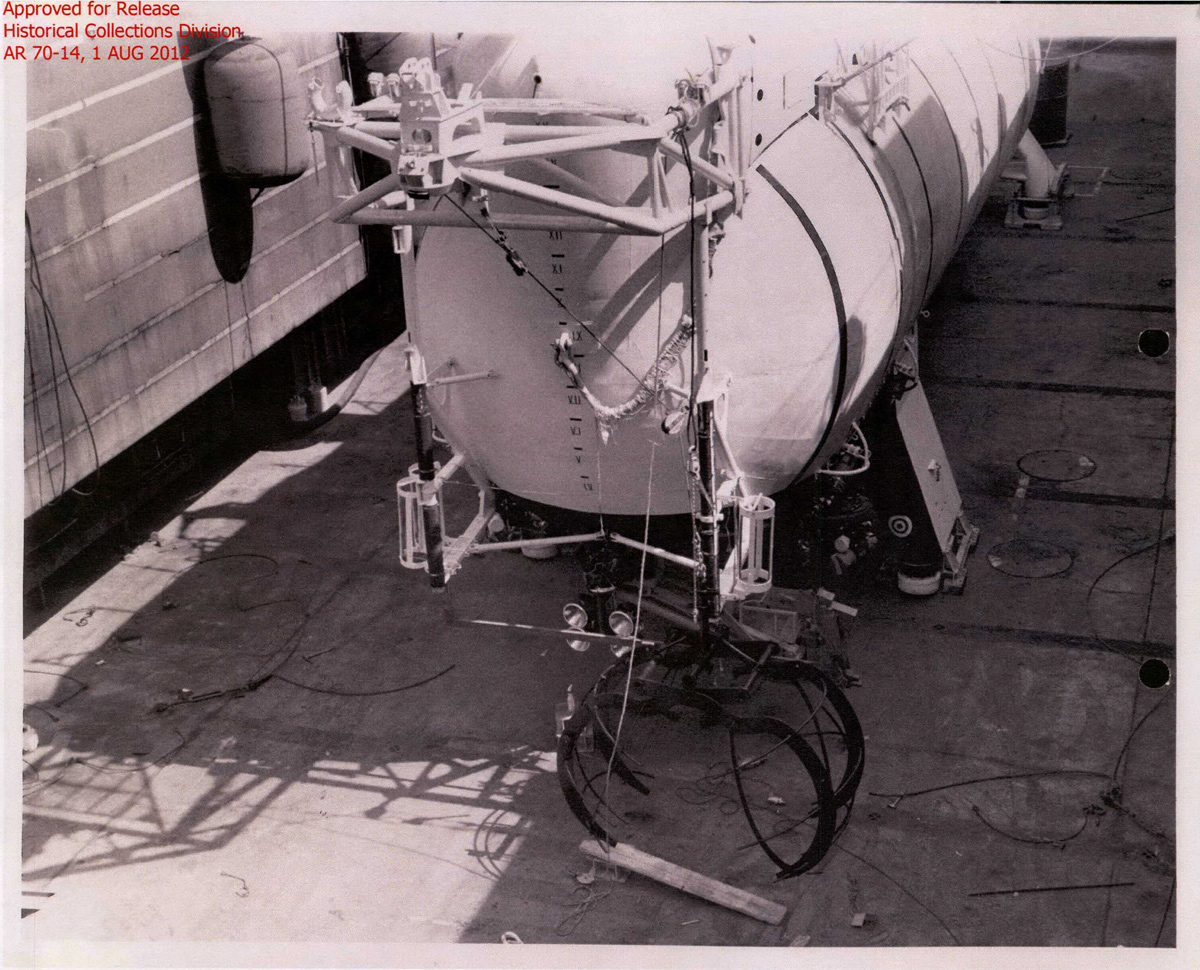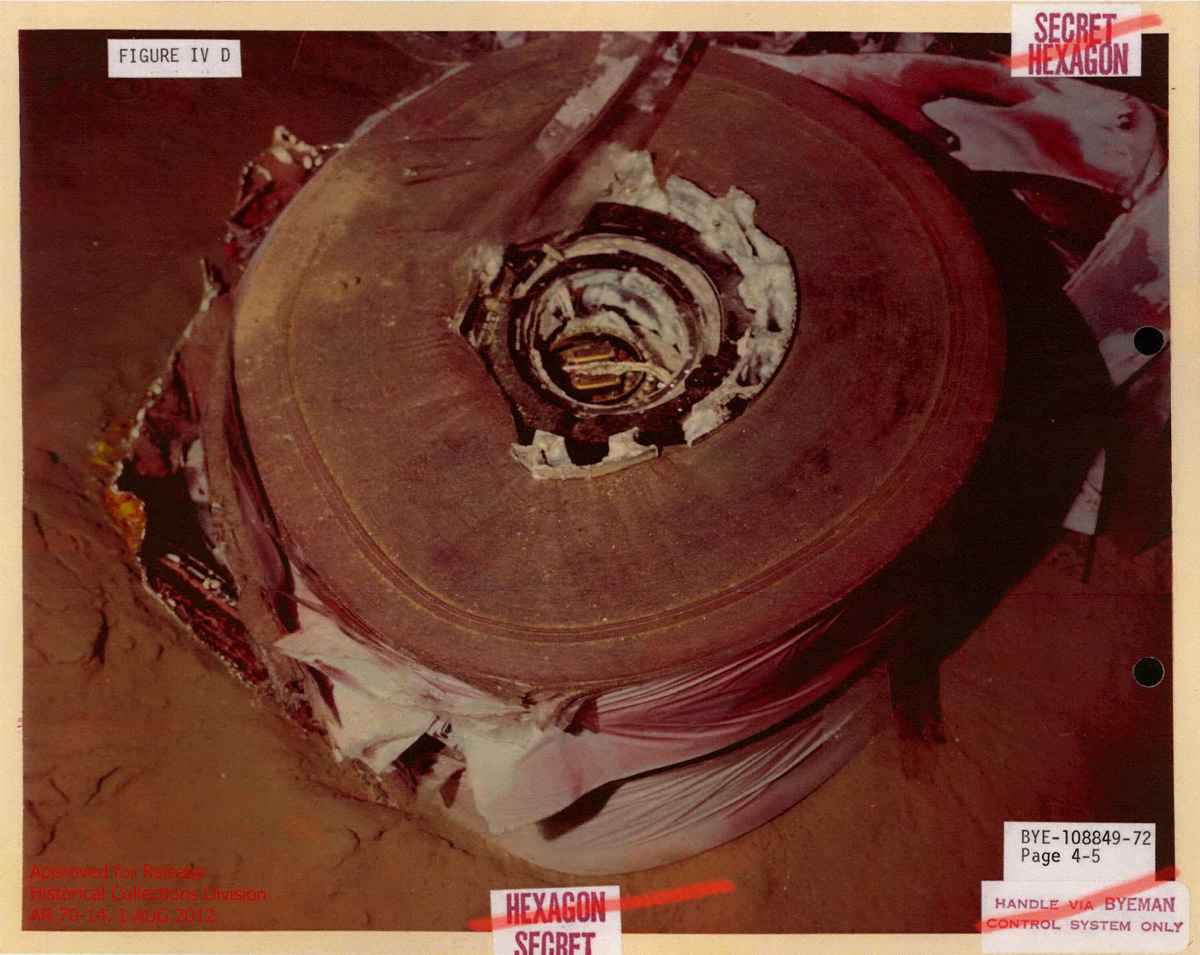CIA Declassifies Amazing 1972 Spy Satellite Capsule Deep-Sea Rescue

It's a plot worthy of a Hollywood action movie: 40 years ago, the U.S. Navy carried out a daring mission to retrieve a top-secret film capsule that had settled more than 16,000 feet (4,876 meters) underwater on the ocean floor. At the time, the expedition was the deepest undersea salvage operation ever attempted.
Documents released publicly by the Central Intelligence Agency on Aug. 8 detail the capsule's incredible recovery, using what was at the time the Navy's most sophisticated deep-sea submersible.
On July 10, 1971, a classified U.S. satellite, code-named Hexagon, attempted to return a mysterious "data package" to Earth by ejecting a capsule over the Pacific Ocean. The capsule's parachute failed, and the canister slammed into the water with an excruciating 2,600 Gs of force.
Hexagon satellites, which were declassified in 2011, were photoreconnaissance spacecraft that were part of an American Cold War-era spy program. Since these satellites preceded today's era of digital technology, Hexagons recorded images on film, sending them back to Earth in capsules that re-entered Earth's atmosphere and landed within a designated zone near the Hawaiian Islands in the Pacific Ocean.
During the first Hexagon mission in the summer of 1971, a parachute carrying one of these capsules broke, and the precious cargo crashed into the ocean and sunk about 16,400 feet (almost 5,000 meters).
To recover the sunken capsule, the U.S. Navy crafted a bold rescue mission that would be carried out by its Trieste II Deep Sea Vehicle, or DSV-1. At the time, this mini-submarine was the Navy's best deep-sea submersible. [Photos: 1972 Spy Satellite Capsule's Deep-Sea Rescue]
The newly declassified CIA documents include a report of the undersea mission and pictures of the Navy's DSV-1 and the film capsule at the bottom of the ocean. The report, which offers a glimpse of the exhilarating events, also explains how and why the CIA decided to retrieve the Hexagon Recovery Vehicle (RV) in the first place.
Breaking space news, the latest updates on rocket launches, skywatching events and more!
"The decision was made to attempt the deep sea recovery of the RV primarily for the intelligence value of the film record and secondly to establish a capability for deep oceanographic recovery," intelligence officials wrote.
According to the documents, the Trieste II made three attempts to salvage the film capsule: first on Nov. 3, 1971, then on Nov. 30, 1971, and finally, in a successful third try, on April 25, 1972.
The mission's planners had four primary areas of concern, beginning with the ability to pinpoint the impact area. At that time, no object the size of the film canister had been detected by sonar and been searched for underwater. Officials were also unsure how much damage the capsule had suffered upon impact, and after being submerged in sea water. Finally, the Trieste II had yet to venture below 10,000 feet (3,048 meters) before then.
These obstacles were eventually overcome, and on its third attempt, the Trieste II found its sunken treasure. In the predawn hours of April 26, 1972, the Trieste II emerged about 350 miles (563 kilometers) north of the Hawaiian Islands with the remains of the Hexagon film capsule.
"The third attempt was successful in locating and securing the film stacks; however, as the Trieste was surfacing, the film broke into pieces," officials wrote in their report. "Twenty-five feet was recovered."
The film stack underwent extensive analysis, and it was determined that the Hexagon's Recovery Vehicle broke apart as it crashed into the water. The spools of film were separated from the capsule and several pieces were cut and floated away.
But, all was not lost. The mission proved to be a valuable test of the Navy's ability to carry out deep-sea recovery expeditions. In the report, CIA officials discussed some of the lessons learned, particularly from setbacks that were experienced on all three attempts.
"The third dive, the mechanical arm failed to work, almost preventing operation of the recovery device," the report said. "The on-board computer has never worked. Much more attention is required to the use of high reliability parts and extensive subsystem testing to assure confidence in any given operation."
Still, the mission was seen as a success, even as the motivation for the capsule's recovery shifted from the potential value of the film's reconnaissance, to the usefulness of testing the capabilities of the Trieste II submersible.
"All of the men involved remained enthusiastic and determined throughout the many frustrations and are to be commended for their fine efforts," the report concluded.
Follow Denise Chow on Twitter @denisechow or SPACE.com @Spacedotcom. We're also on Facebook and Google+.
Join our Space Forums to keep talking space on the latest missions, night sky and more! And if you have a news tip, correction or comment, let us know at: community@space.com.

Denise Chow is a former Space.com staff writer who then worked as assistant managing editor at Live Science before moving to NBC News as a science reporter, where she focuses on general science and climate change. She spent two years with Space.com, writing about rocket launches and covering NASA's final three space shuttle missions, before joining the Live Science team in 2013. A Canadian transplant, Denise has a bachelor's degree from the University of Toronto, and a master's degree in journalism from New York University. At NBC News, Denise covers general science and climate change.



